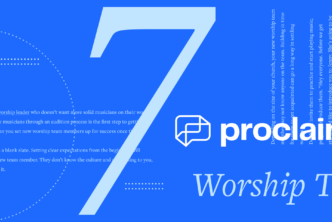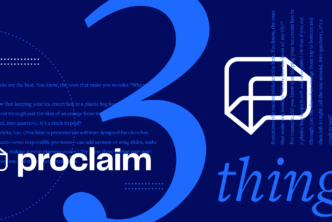One of the most tedious tasks in the church media world is formatting song lyrics. Do I make a new slide for these lines, or keep it to one? Do I use punctuation? What about font, size, color, etc.? Oh, and what do we do about that guitar solo or instrumental section?
There are many decisions to consider, but with these few simple tips you’ll be making great-looking worship slides in no time.
1. Limit lines per slide
As a rule of thumb, try to limit slides to 2–4 lines, 5 at most. In the example included below, the first slide is easy to follow, whereas the second one begins to look like an ancient manuscript.
2. Use a sans-serif font
A sans-serif font is one without extended features on the ends of letters (see first image below). Some common examples are Arial, Calibri, and Verdana. An example of a serif font is Times Roman, Georgia, and Bookman. Avoid comic sans at all costs, as well as cursive fonts, which are hard to read. Generally speaking, sans-serif fonts are more contemporary.
3. Use white text over black
Your projector’s brightest light is white, so white will always be the most visible color. Since lyrics are the most important part of the slide, they should always be the most visible.
4. Lose the labels
I prefer arranging the slides to writing out labels like verse, chorus, bridge, and instructions (such as repeat 2x). It’s better for the worship leader to dictate the flow of the song, as opposed to the slides themselves.
5. Drop punctuation
I prefer a clean-looking slide and usually don’t use any punctuation. No commas, exclamation points, or periods. Since the melody usually dictates the flow of the words, there is not much need for punctuation. This is more of a personal preference than a rule, but I prefer the cleaner look.
That’s it! Follow these five tips for cleaner slides that are easier to put together.
***
Ditch the hand signals! With Proclaim Church Presentation Software, you don’t have to make a scene to communicate with your team. Sending messages between the booth and stage lets you make adjustments without being disruptive.




